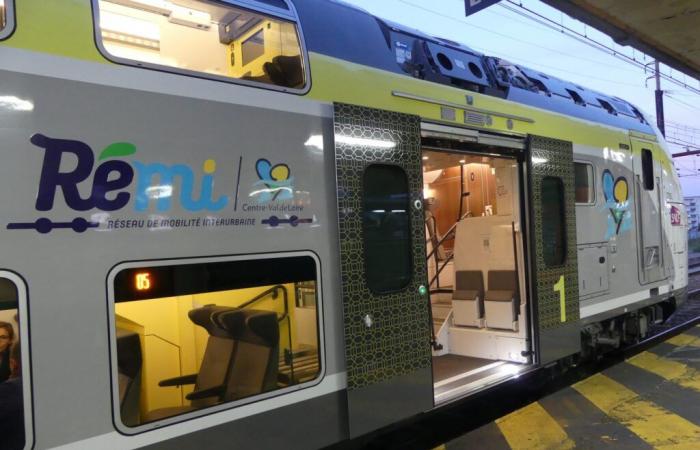
A Tours-Langeais train ticket: 16 minutes, €6.40, or 40 cents per minute. Or 25 cents per kilometer for this journey that takes 25 minutes. On the other hand, with the car, it takes longer but there is no toll. This dichotomy could be such as to make the train unattractive compared to the road even though it is less polluting. Elsewhere, on Tours-Loches and Tours-Chinon, train tickets cost €9.60 when buses that make the same journey cost €3.20. A distortion that is also penalizing for the most ecological mode of transport.
So how can we make the train more popular? The Centre-Val de Loire region has recently tried to carry out work to improve the punctuality and speed of the TER trains on Tours-Loches and Tours-Chinon. It took the opportunity to slightly increase the number of rotations on these lines, in order to accommodate a few more passengers. These are undeniable first steps that have required millions of euros of investment, but they are not enough to really reduce the modal share of the car.
In the long term, the metropolitan RER project could change the situation with more frequent journeys, including outside peak hours. Will this new service be attractive enough if fares remain high? This is a question that deserves to be asked.
The debate is eternal. In this summer of 2024, the decision of Tours Métropole to make the Fil Bleu transport network free for children under 11 was fairly unanimously welcomed. At the same time, the €4 increase in the general public pass (used by a minority of users, and often 50% financed by their employer) was criticized, on the pretext that it did not encourage people to take public transport. We then saw calls to make the network completely free for locals, as Montpellier does, or as Bourges and Châteauroux have tried (with some success).
After all, why not? Each time the measure guarantees an increase in traffic, but not necessarily the same number of fewer cars. We also observe that people who used to walk are starting to use public transport. The same goes for others who used to take their bikes. And above all, making a transport network free means that its cost must be financed in other ways, either through taxes or by cutting back on other budgets.
Having made this observation, why not use the Île-de-France method? Its president – from the right – Valérie Pécresse has just announced that a single ticket at €2.50 will soon be put on sale and that it will allow travel everywhere in the region. That is to say, we will pay the same price to go from the Eiffel Tower to Notre-Dame as from the center of Paris to Melun, on the borders of Seine-et-Marne. €2.50.
This is not the first time that the most populated region in France has slashed its transport prices. A few years ago, the RER or Transilien ticket had already been capped at €5, while it was sometimes necessary to pay €8 to €10 to travel to the outer suburbs. This time, there will certainly be an increase in the single metro ticket (from €2.15 to €2.50) but with a single small payment you will be able to travel much further, without worrying about connection problems.
In Touraine, the idea of a single subscription for transport has already been mentioned by some elected officials. But we can also legitimately ask ourselves whether implementing a similar policy in Île-de-France would not be a good solution. Harmonizing the price of Rémi buses and trains, for example, at least on a departmental scale, even if it means paying a surplus to travel from Tours to Blois or Tours to Orléans, for example.
Reduced fare rather than free transport to popularise transport. Until now, the Centre-Val de Loire has rather chosen the second option, with school transport at €0 which it was the first to set up (including train journeys) but also free transport on weekends for young people (again with some success). At the same time, it regularly offers promotional operations for events such as Heritage Days, university open days or the Terres du Son festival (tickets to go there are €4).
The rest of the time, distance-based pricing can quickly penalize occasional users (more than €20 to go to Orléans or Angers) to the point of creating competition between trains since OuiGo, TGV or Intercités are sometimes cheaper than Rémi. We know that even with these high prices, travelers are still far from paying the real cost of their transport (including SNCF team salaries, train purchases, maintenance and network upkeep) but when we see that it seems possible to make nice moves in favor of less carbon-intensive daily transport, we say to ourselves that there is perhaps more thought to be given to the subject.





